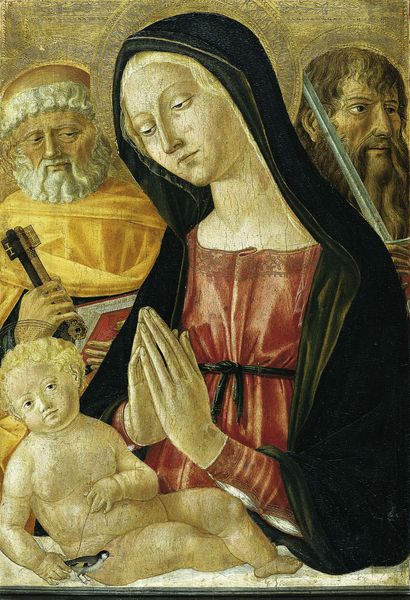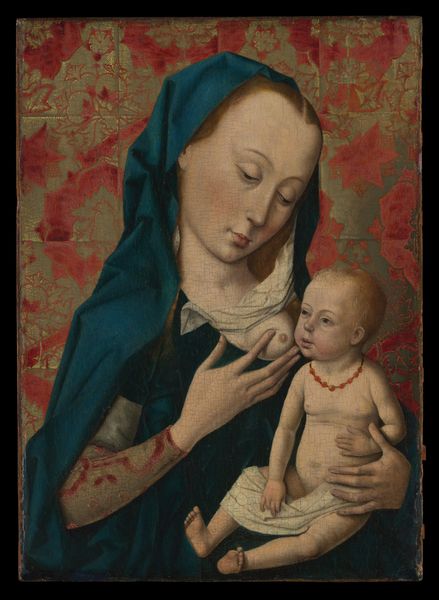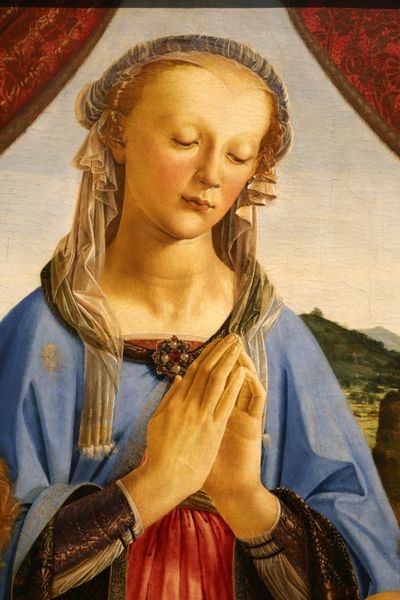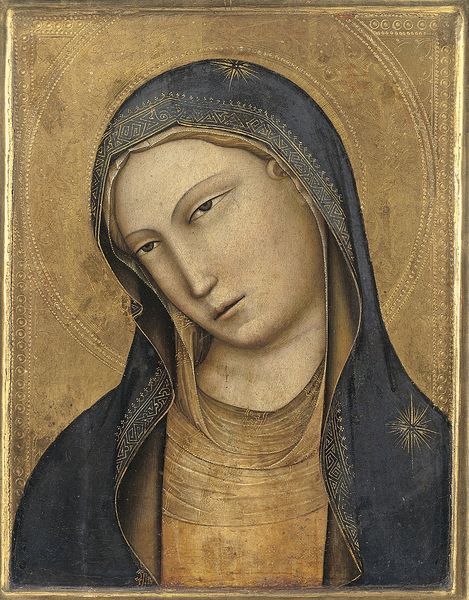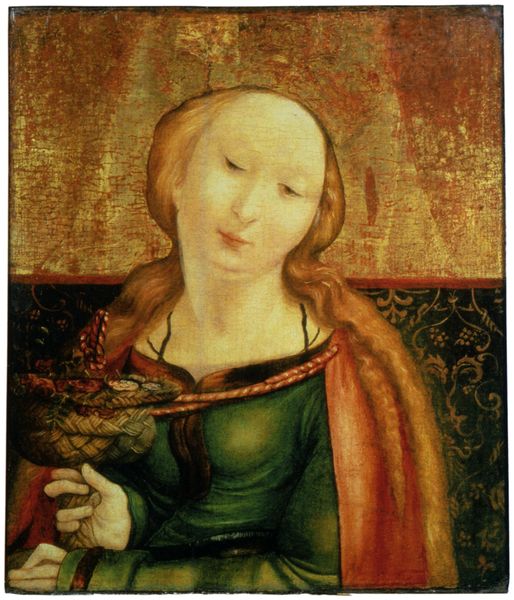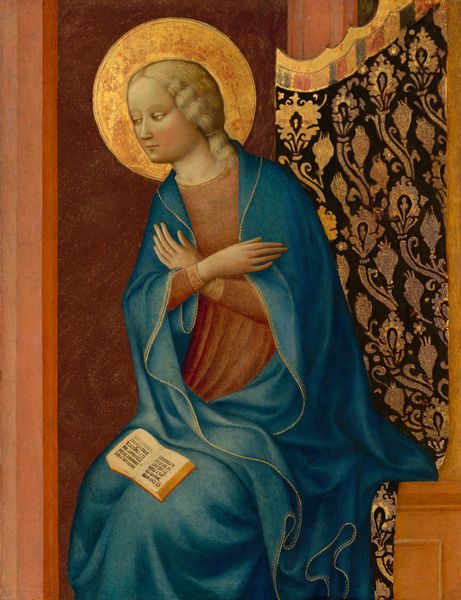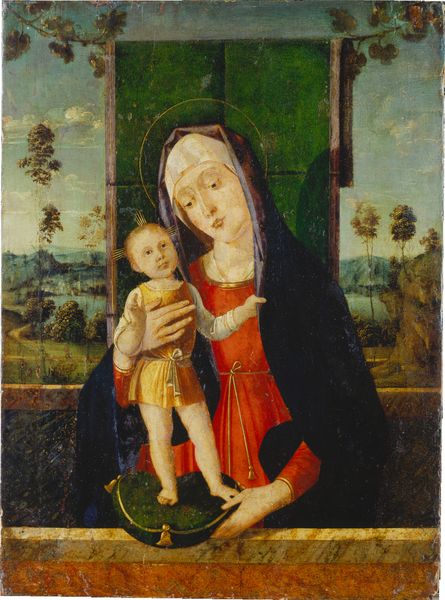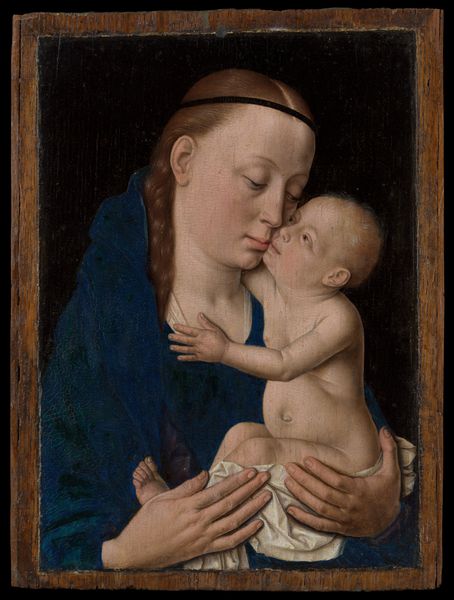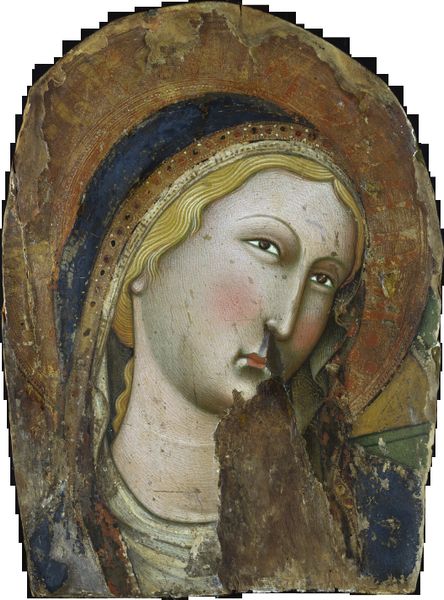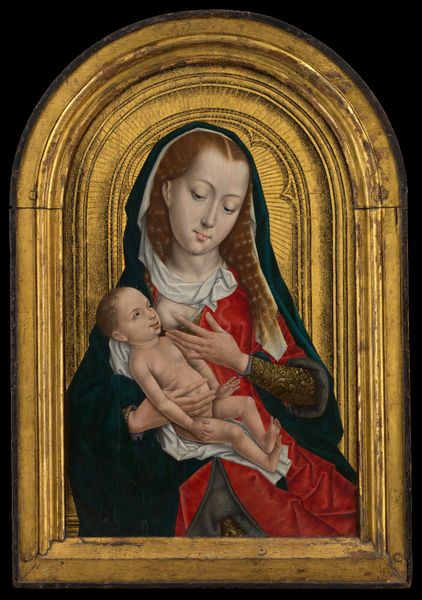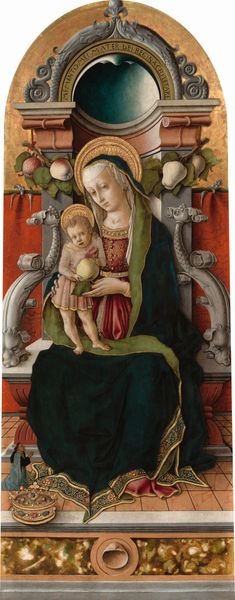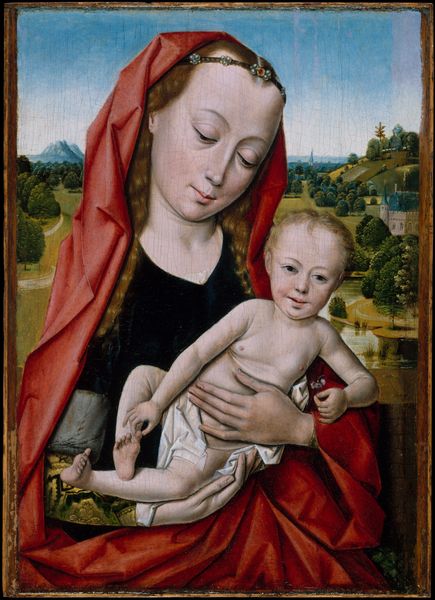
tempera, painting
#
portrait
#
tempera
#
painting
#
figuration
#
italian-renaissance
#
portrait art
Copyright: Public domain
Curator: Here we have Filippino Lippi’s “The Virgin of the Nativity,” painted around 1500. It is a tempera painting and rendered as a portrait. Editor: My first thought is the quiet reverence. The muted colors, the bowed head, it all speaks to a deep sense of contemplation. The artist uses very subtle brushstrokes that render realistic, nearly transparent fabrics. Curator: Indeed. Lippi here creates a Virgin that diverges from previous representations in both presentation and ideological import. Notice how she is posed not as a queen, but as a figure humbled by prayer and devoutly in observance, typical in paintings that humanize biblical figures. The choice of tempera contributes to the flat rendering characteristic of Renaissance painting. Editor: Precisely, this composition aligns with shifting religious sentiments around the turn of the century. It appears designed for personal contemplation rather than public devotion, reflecting how religion played into a person’s day to day. Look at the background. While minimalistic, the stark contrast draws the eye towards her serene face, and then is re-emphasized through the sharp clothing tones that render dimension without contrast in complexion. Curator: Lippi, as a son of Fra Filippo Lippi, was uniquely positioned to interpret this theological shift within art circles. He presents the Virgin not merely as a holy figure, but also as an intimate human one in the domestic scene of motherhood, deeply impacting how audiences received the idea of the divine and of devotion in turn. Editor: And in so doing, helps recast the figure of Mary for his time. It is in a way a work of religious politics. I would like to understand, then, if its setting affected the general culture’s perception, which is in stark contrast to many earlier portrayals. Curator: Undoubtedly. Lippi captures the transition toward Renaissance humanism, where individual sentiment and subjective spirituality played crucial roles in Italian artistic, and theological, interpretation. I appreciate seeing the elements come together like that, thank you! Editor: Yes, indeed. The painting is now less two-dimensional, it is filled with nuance and the artist’s subtle statements.
Comments
No comments
Be the first to comment and join the conversation on the ultimate creative platform.
